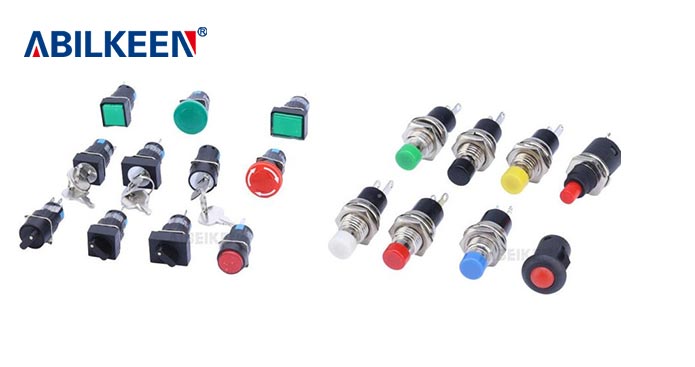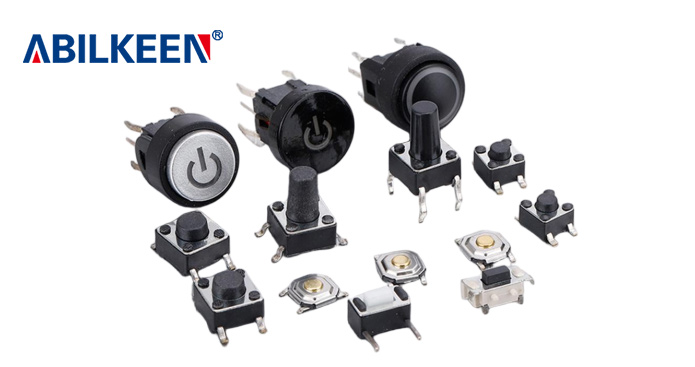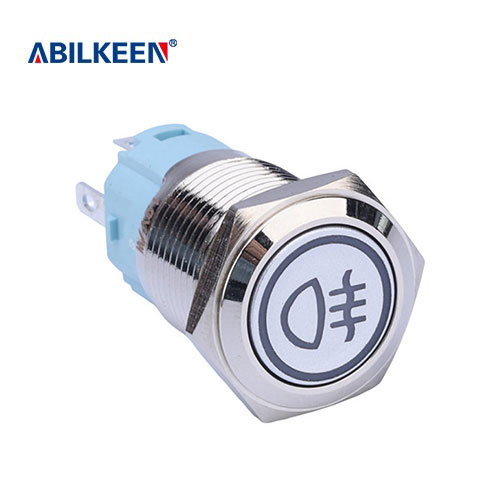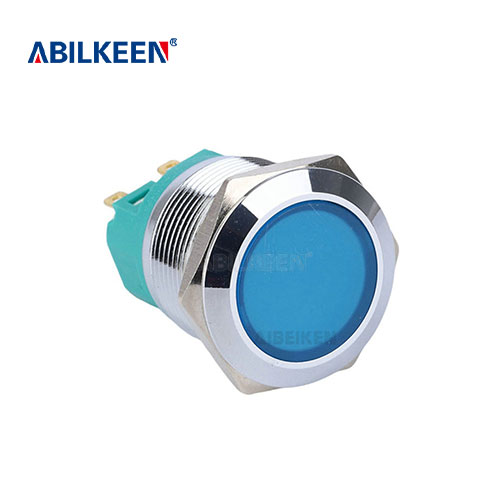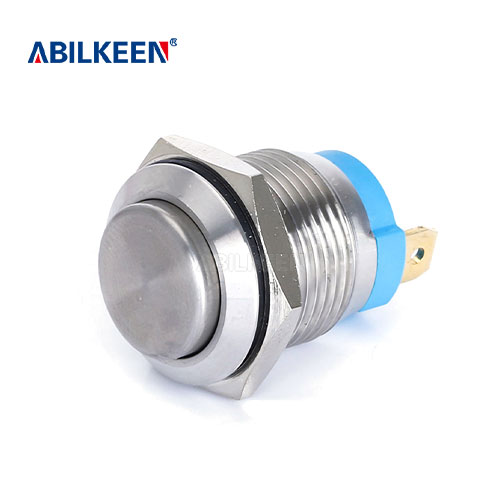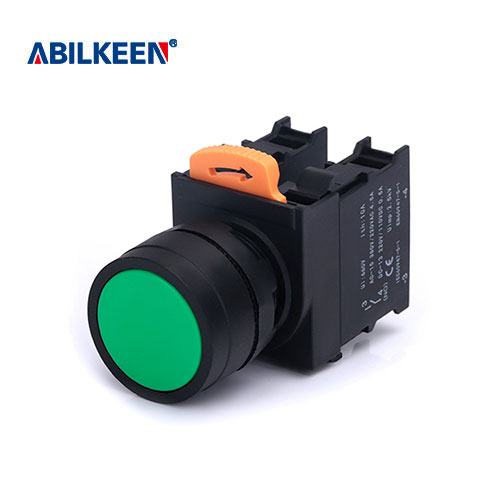Introduction and application fields of different Toggle Switch

 By:Blazers
By:Blazers
A Toggle Switch is a mechanical switch that connects or disconnects circuits by manually pulling a lever, and is widely used in electronic devices, industrial control, household appliances and other fields. The following are the common classifications and features of toggle switches in our company AIBEIKEN:
1. Classified by the number of poles and bits
SPST
The simplest type, with 1 input terminal and 1 output terminal.
Function: On-off a single circuit (ON/OFF).
Example: Light switch, main power switch.
SPDT
One input terminal and two output terminals (normally open/normally closed).
Function: Switch between two circuits (choose one).
Example: Select the input source (such as A/B signal switching).
DPST
Two independent input terminals and two output terminals.
Function: Simultaneously control the on and off of two circuits.
Switch the positive and negative poles of the power supply simultaneously.
DPDT
Two input terminals and four output terminals (two sets of SPDT).
Function: Switch between two independent circuits.
Example: Motor forward and reverse rotation control.
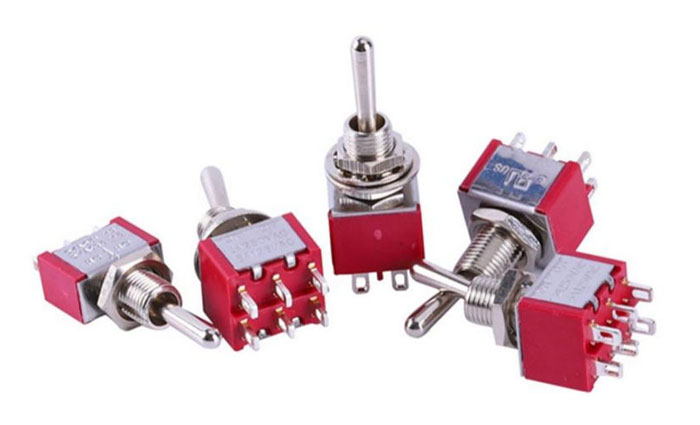
2. Classified by installation method
Panel Mount
It is fixed on the panel opening through a nut, featuring high stability.
It is applicable to industrial equipment and instruments.
PCB Mount
The pins are directly soldered onto the circuit board, saving space.
Applicable to consumer electronic products.
DIN Rail Mount
It is fixed on industrial standard guide rails for easy maintenance.
Commonly found in electrical control cabinets.
3. Classified by rated current/voltage
Low-power type
Current: <5A, Voltage: 12-24V.
Application: Signal switching, small electronic devices.
Medium power type
Current: 5-15A, Voltage: 120-250V AC/DC.
Usage: Household appliances, lighting control.
4. Classified by operation mode
Standard Toggle
The lever length is moderate and it is operated by manual towing.
Short Lever
The leverage is relatively short and is suitable for scenarios with limited space.
Long Lever
The lever has been lengthened to facilitate operation with gloves on (such as in industrial environments).
5. Classified by protection level
Standard type (IP20)
Dust-free and waterproof design, suitable for dry environments.
Splash-proof type (IP65)
With a sealing ring, it is dust-proof and water-proof, suitable for outdoor or humid environments.
6. Special Function types
Locking Toggle
It needs to be lifted or pressed to switch to prevent misoperation (such as the emergency stop switch).
Momentary Toggle
It will automatically reset after the lever is released (such as the doorbell switch).
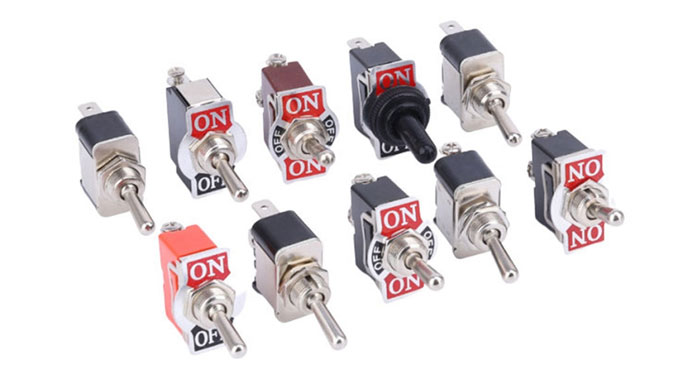
Toggle switches are widely used in multiple fields due to their simple structure, intuitive operation and high reliability, mainly serving functions such as circuit on-off, signal switching and equipment control. The following are its typical application fields and specific functions:
1. Industrial Control and Automation
Function: To control the start, stop or direction switching of equipment such as motors, pumps and valves.
Typical applications:
Motor forward and reverse rotation: Use the DPDT toggle switch to switch the polarity of the motor power supply.
Equipment mode selection: Switch between manual and automatic control modes via the SPDT switch.
Emergency stop: A toggle switch with locking function can cut off the power supply.
2. Household appliances and lighting
Function: Power on/off or function switching.
Typical applications:
Lamp switch: SPST toggle switch controls the lighting circuit (such as table lamps, wall lamps).
Fan speed regulation: Multiple toggle switches are used to switch between different speeds (such as three-speed fans).
Kitchen appliances: Power switches for bread machines and blenders (with splash-proof design).
3. Electronic equipment and instruments
Function: Signal switching or circuit configuration.
Typical applications:
Test equipment: Use the SPDT switch to switch the measurement signal input (such as oscilloscope channel selection).
Audio equipment: Tone switching of guitar effectors, or input source selection of power amplifiers (A/B channels).
Power supply selection: Switch between battery and external power supply (such as emergency lights) in dual-power devices.
Features: A small PCB mounting switch with low contact resistance and high precision is required.
4. Transportation and Automobiles
Function: To control on-board equipment or safety systems.
Typical applications:
Off-road vehicle lighting: Switch between fog lights and searchlights (waterproof and dustproof design).
Marine equipment: Control navigation lights, pumps (made of salt spray resistant materials).
Manual over-control switch for the hydraulic system of excavators in construction machinery.
5. Medical equipment
Function: Security isolation or mode selection.
Typical applications:
Medical power supply: The SPST switch cuts off the main power supply of the equipment (with locking to prevent accidental contact).
Treatment mode switching: such as the high/low gear selection of the physiotherapy device.
6. Energy and Power System
Function: Isolate or switch the power path.
Typical applications:
Distribution box: Dual power switching (mains power/generator).
7. Special environment applications
Outdoor equipment (such as street lamps, billboards) :
The waterproof toggle switch is used in conjunction with the timer to control the power-on time.


